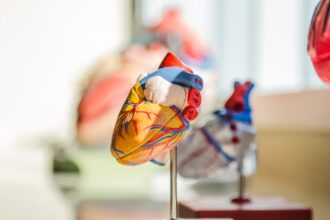Increased sensitivity to typically non-painful stimuli, known as “allodynia,” ranks among the principal physical manifestations of alcohol withdrawal. Allodynia reflects a heightened response to mechanical stimuli, signalling chronic pain. A recent study conducted by scientists at Scripps Research and published in Pharmacological Research on October 11, 2024, delves into how the severity and persistence of this sensitivity correlate directly with the quantity of alcohol consumed over time. According to their findings, in animal models where alcohol consumption was moderate, the hypersensitivity to pain reverted to normal levels within approximately a week of cessation. However, in models simulating heavy alcohol intake, this sensitivity extended beyond the cessation period, indicating a potentially permanent change.
The research highlights that the protracted pain associated with withdrawal in heavy drinkers is linked to alterations in endocannabinoids, which are vital chemical messengers in the nervous system. The study pinpoints a specific endocannabinoid that could be a promising target for developing treatments aimed at mitigating allodynia in individuals suffering from alcohol use disorder (AUD).
Marisa Roberto, PhD, the study’s senior author and a professor in the Department of Neuroscience at Scripps Research, articulates that while temporary changes in mechanical sensitivity induced by long-term alcohol intake can be reversed in cases of moderate drinking by halting consumption, the alterations observed in heavy drinkers are likely irreversible without pharmacological intervention. The study proposes that modulating the metabolism of the endocannabinoid 2-AG could offer a new avenue for treating neuropathic pain, which is frequently exacerbated by chronic and excessive alcohol consumption.
AUD affects nearly 29 million individuals in the U.S. and significantly increased during the COVID-19 pandemic. It is particularly associated with neuropathic pain that often intensifies during withdrawal phases. This type of pain is more prevalent among women, both under the influence of alcohol and during withdrawal phases. Yet, the underlying mechanisms driving the increase in sensitivity due to alcohol and its withdrawal remain largely unexplored.
The researchers utilised two rat models to study the effects of alcohol consumption and subsequent withdrawal on allodynia. One model simulated a higher preference for alcohol, indicative of heavy drinking, while the other represented moderate drinking levels. After 5 weeks of alcohol consumption followed by 26 days of abstinence, it was observed that, before alcohol exposure, rats in the heavy-drinking model exhibited a baseline increased sensitivity, which did not further escalate with alcohol consumption. In contrast, the moderate-drinking rats showed a spike in sensitivity levels during alcohol intake. However, upon withdrawal, allodynia was evident in both groups, albeit the moderate drinkers saw a return to normal sensitivity levels after several days, with a noted delay in female rats.
Significantly, the time frame of observed allodynia in the heavy-drinking rats did not show signs of subsidence even after an extended period of abstinence, which, when extrapolated to human timelines, equates to about 30 months. This suggests a potentially permanent condition necessitating urgent pharmacological treatment, as indicated by Vittoria Borgonetti, PhD, co-first author of the study. Nonetheless, she advises that further testing is required to validate these findings in human contexts.
Further investigations into the dorsal root ganglia of the rats revealed that alcohol withdrawal led to diminished levels of 2-AG in the heavy-drinking models, with these reduced levels correlating directly with the observed allodynia. This discovery earmarks 2-AG metabolism as a potential therapeutic target. Additionally, altered levels of eicosanoids, immune signalling molecules, were noted in the female rats, underscoring significant sex differences in the impacts of AUD and chronic pain, a gap in knowledge that the research team intends to address in future studies.
Looking ahead, the team plans to explore whether restoring physiological levels of 2-AG at the onset of withdrawal through pharmacological modulators could prevent or alleviate mechanical allodynia triggered by alcohol consumption. They also aim to assess how treatments might affect males and females differently, tailoring therapeutic approaches to individual needs.
More information: Vittoria Borgonetti et al, Excessive alcohol intake produces persistent mechanical allodynia and dysregulates the endocannabinoid system in the lumbar dorsal root ganglia of genetically-selected Marchigian Sardinian alcohol-preferring rats, Pharmacological Research. DOI: 10.1016/j.phrs.2024.107462
Journal information: Pharmacological Research Provided by Scripps Research Institute








